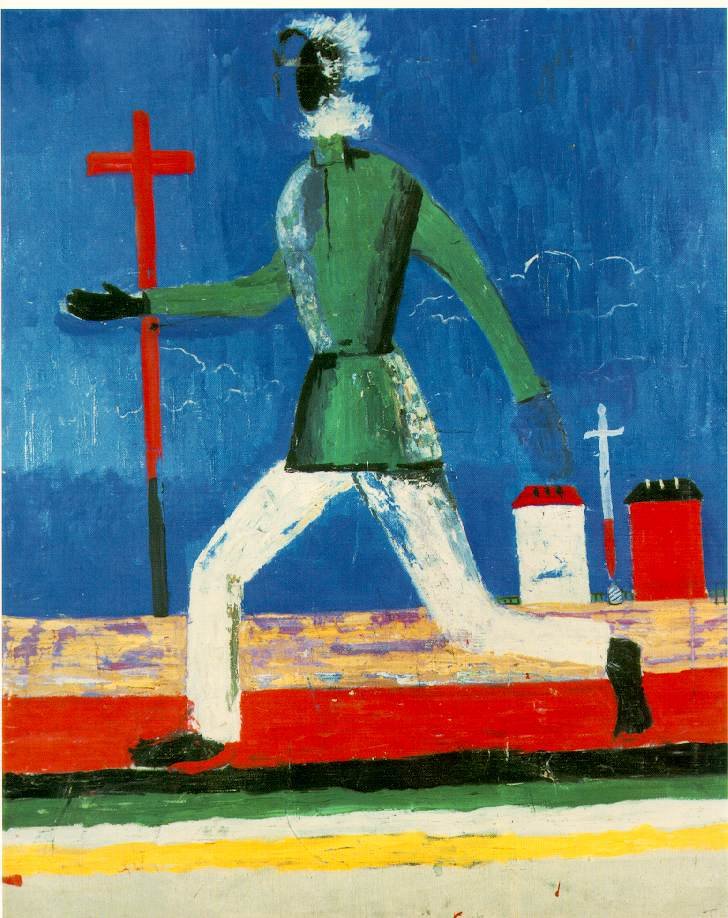90 years ago, the Soviet regime killed 7 million Ukrainians in a genocide called Holodomor. They were mostly from villages. My great-grandmother survived, but two of my great-granddads died. Here is the work of Malevich dedicated to Holodomor.
Thread of 🇺🇦 art and Holodomor.🧵
Thread of 🇺🇦 art and Holodomor.🧵

This work is called "Village man that running" and was made in 1932-1933. Malevich was growing up in 🇺🇦 villages and was writing in the diaries about how much traditional 🇺🇦 culture gave him. He also made a work called "Where hammer and sickle there is death and starvation." 

The Father of Ivan-Valentyn Zadorozhyi sends a future artist to Kyiv so that boy can find some job and food. Teenager works in different jobs. When Holodomor ends, he discovers that all his family died from starvation.
'Daily Bread', 1983–1985
'Daily Bread', 1983–1985

Soviets were taking food from village people to make them work in collective farms. My granny was 8 years in 1932, to survive, she was working in the fields. Her 'salary' was a couple of corn seeds. That's how she survived.
Prints of Sophia Nelepynska-Boichuk (1932)

Prints of Sophia Nelepynska-Boichuk (1932)


Project “I still feel sorry when I throw away food – Grandma used to tell me stories about the Holodomor.” (2018) by @lia_dostlieva and Andrii Dostliev) is the personal sense of guilt that accompanies the acts of throwing food away. It's the ink prints of the thrown-away food. 



Russians committed genocide against our nation 90 years ago and continue to do it now. But we survived. My great-grandparents survived. And I survived in Bucha. Here we are, generations of 🇺🇦 who would not surrender. Stalin dead. So Putin will be. Russia will fall, as USSR did.
• • •
Missing some Tweet in this thread? You can try to
force a refresh













































